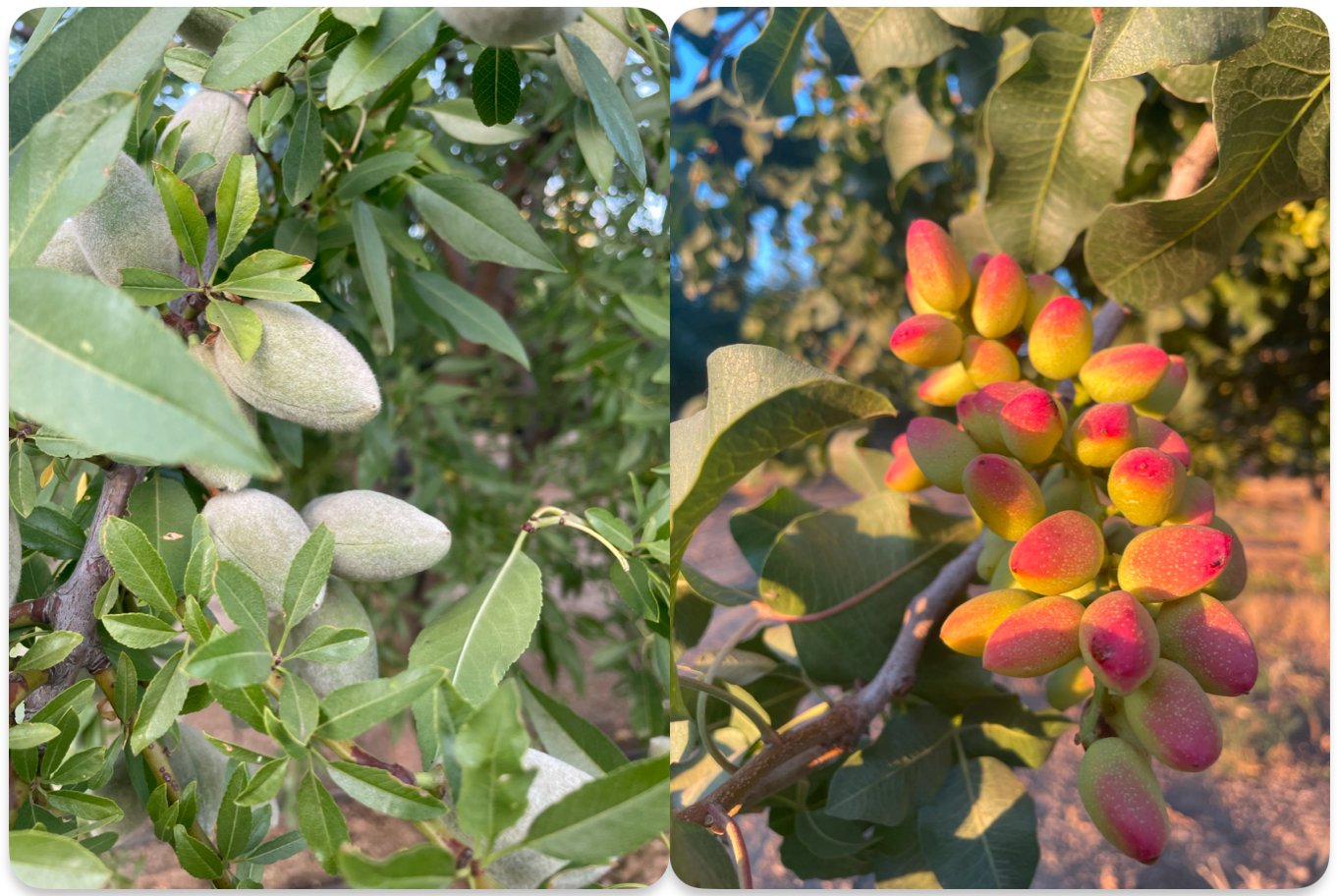


The start of July marks a turning point for California’s orchards. With harvest approaching fast, growers are juggling peak pest pressure, kernel development, and the final decisions that will shape this season’s yield.
2025 California Almond Forecast
According to the USDA-NASS May 2025 forecast, California’s almond crop is projected at 2.80 billion pounds, up 3% from last year’s final total of 2.73 billion. Yield is expected to average 2,010 pounds per acre across 1.39 million bearing acres. While early-season weather included rain, wind, and hail that impacted bloom in parts of the San Joaquin Valley, March weather conditions helped accelerate development. The forecast predicts nonpareil yields may be lighter due to reduced flower set, but overall crop conditions are strong.
Almond Updates
Almonds are entering hull split across much of the state, a key phenological marker and a crucial moment for Integrated Pest Management. At this point, in-season nuts are most susceptible to navel orangeworm damage, so precision treatments are essential.
Growers should consider applications of sprayable mating disruption and traditional insecticides tailored to local degree day models and monitoring data. Because harvest is only a few weeks away for early varieties, July is the time to finish strong and minimize in-season pest damage.
Pistachio Updates
Pistachios continue kernel fill in July. For the most part, shells have completed hardening, and kernels are steadily accumulating carbohydrates, oils, and proteins. Research from UC IPM shows nutrient uptake is helpful, with targeted sprays of potassium or other micronutrients able to supplement quality nut development.
Insect pressure continues to rise, especially in warmer regions where Gill’s mealybug and mites thrive in dry, dusty conditions. Gill’s mealybug feeding can reduce tree vigor and leave sooty mold on pistachio clusters. Dust control and selective treatment can help reduce outbreaks.
Key Considerations

CheckMate NOW-F at Hull Split
Growers can improve NOW control by spraying CheckMate NOW-F at least twice per season.
The longevity of CheckMate NOW-F makes it ideal for protecting in-season crop, especially given its MRL-exempt status. Growers receive a significant return on investment by applying throughout hull split or harvest.
July CEU Events
We understand that continuing education is necessary to stay informed, maintain certifications, and grow expertise in your specific crop system.
To make it easier for you, we’ve compiled a curated list (see below) of this month’s in-person and online Continuing Education Units (CEUs).
These events provide an opportunity to learn more about effective pest management strategies in California crop systems.
*No insect pest management related CEUs available this month in Southern California, the Southern San Joaquin Valley, or the Central Coast.
Thanks for choosing Suterra as your partner in sustainable pest management. Connect with a team member here.